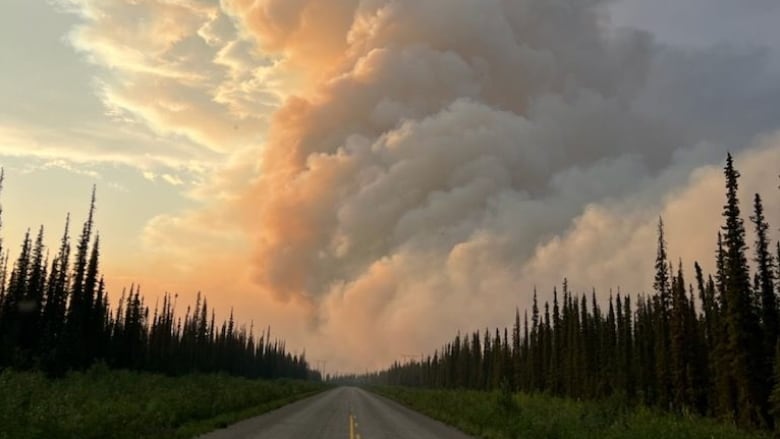Historic 2022 wildfire season has Yukon well past 25-year average for area burned
The total area burned is nearly five times higher than it was at this date last year

Yukon is experiencing a historic number of fires in the territory to date, with total burned areas surpassing the 25-year average.
So far this year, 100,998 hectares have burned in the territory due to wildfires — 20,000 hectares more than the 25-year average at this time. The figures were shown in a national report issued by the Canadian Interagency Forest Fire Centre on Saturday.
The amount of area that has been burned to date is nearly five times higher this year compared to last year at the same time, which was only 22,648 hectares.
The CIFF's report also shows the number of wildfires in the territory has been significantly higher. This year, there have been 227 fires compared to 42 last year.
Kathryn Hallett, a spokesperson with Yukon's Protective Services division, said these numbers are significant, especially as many of the fires are happening closer to communities and essential transit infrastructure like the Alaska Highway, Robert Campbell Highway and the North Klondike Highway.
"It's actually a really good thing when we have fires that are out in the wilderness because it's a natural ecological process," said Hallett.
"But obviously, when they're close to communities and people and infrastructure, we have to put resources on them to try and put them out because people could be in danger."
Evacuation alerts have been issued for several communities, including Stewart Crossing and the Silver Trail and surrounding areas.
"They're in the process of setting up a 150-person camp in Pelly to help with the fires in the Silver Trail, Stewart and Mayo area," said Hallett, who explained that in a "typical" fire season, Yukon might have 100 firefighters on the ground at one point across the territory. Currently, there are 300 firefighters with additional resources coming up from B.C. soon.

As of Sunday morning, there is an extreme fire danger rating for Whitehorse and Carcross.
The Level 2 fire ban is still in place for all Yukon fire management districts, meaning only cooking and warming fires are allowed in the fire pits and stoves at road-accessible territorial and commercial campgrounds, but all other fire use is suspended.
As the Yukon continues to face multiple challenges, from increased fire activity to road closures and Wednesday's internet outage, Hallett said people need to pay attention to the travel advisory.
Travel Advisory
The Yukon Government issued a travel advisory for the entire territory on Friday due to the wildfires.
The advice is for Yukoners and visitors to limit travel between communities to essential travel only.
"People travelling might be adding extra pressure on to any responses or onto locals in some of the communities that are under evacuation alert," said Hallett.
Hallett also mentioned due to flooding and wildfires causing a number of closures across the territory, it's been harder to get fuel or grocery trucks into some of the communities.
"What we don't want is people coming in for a weekend trip or something and buying some of those essential items in those communities," she said.
Hallett also mentioned if there were to be an actual evacuation in one of the communities and there are more people than there usually is, this will add extra pressure and stress to safety efforts.
"So it's really important that folks respect that and respect that there's some people going through some really stressful times right now," she said.
Have grab-and-go bag
Hallett recommends that "people should always have a grab-and-go bag ready to go" in case they have to leave their homes quickly, regardless of whether they're under an evacuation order or not.
"It's one of the very basic, easiest things that people can do to be prepared for emergencies," she said.
In the bag, people should have enough water for up to three days for everyone in the household, food for the same length of time, medication and all important documents, such as passports and licenses.
The next step, according to Hallett, is to make a family plan in case any members get separated during the evacuation, and set an out-of-territory safety contact.
Corrections
- An earlier version of this story incorrectly said that evacuation alerts had been issued for Carmacks and Teslin. In fact, those evacuation alerts related to flooding last month.Jul 11, 2022 10:19 AM CT

